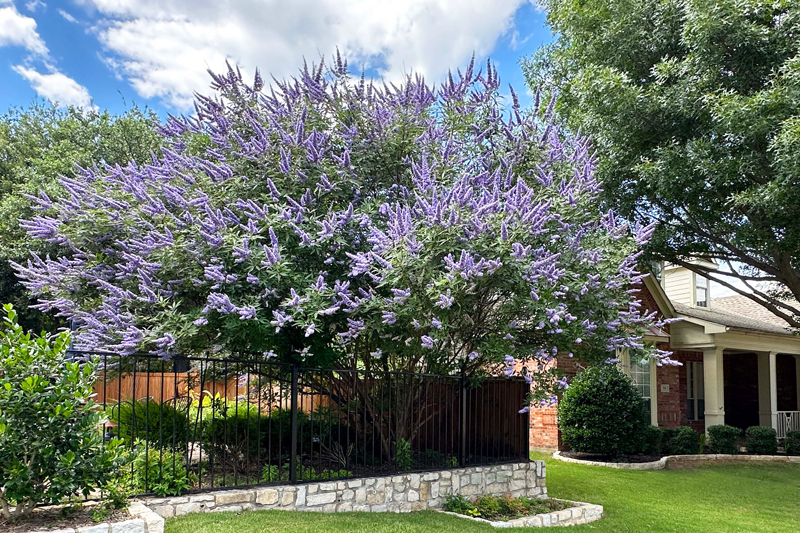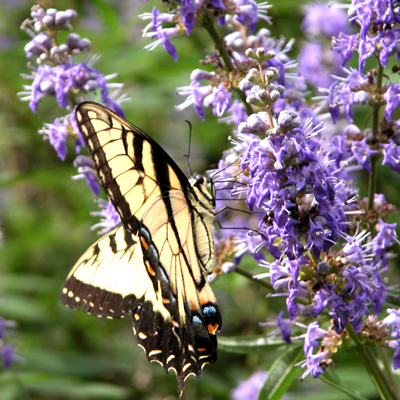Save space for Vitex

Vitex is a plant of many functions. It can be left alone to mature into a large shrub with its branches growing all the way to the ground, or the lower limbs can be removed to make it look like a small tree. With age, trunks of vitex in tree form take on a twisted, gnarled appearance and add much character to the garden.
Use vitex as a single specimen as a courtyard or patio tree. Plant a row of vitex along a property line to create a colorful screen. Or use it in a mixed border with pink-flowering rose of Sharon, ‘Mystic Spires’ salvia and ‘Powis Castle’ artemisia for a stunning composition of blue, pink and silver.
Vitex grows best in full sun and in any soil that is well drained. Once established, it demonstrates considerable drought tolerance. Vitex can be pushed to faster, more luxuriant growth with light applications of fertilizer in spring and early summer, by mulching around the plant, and by supplying supplemental irrigation.

What you’ll want to know…
• Scientific name: Vitex agnus-castus.
• Common names: Vitex, lilac-chaste tree, Texas lilac. (That last one is really misleading, since it doesn’t look or smell like a lilac.)
• Native home: Mediterranean area to Pakistan.
• Mature height if unpruned: 12 to 20 ft. (dwarf varieties are sold).
• Mature spread if unpruned: 12-20 ft.
• Sun/shade: Needs sun to bloom properly.
• Growth form: Shrubby, but can be trimmed into small tree, often with gnarly trunk(s).
• Best landscape uses: Small accent tree to anchor corners of home or large garden bed. Large screening shrub for more spacious landscape.

• Flowering season: May into early June.
Note: Will repeat bloom in South Texas later in summer if pruned significantly following first bloom. Otherwise, normal pruning should be done in late winter.
• Flower colors range from blue to blue-violet among such cultivars as ‘Montrose Purple,’ ‘LeCompte,’ and ‘Shoal Creek,’ all of which are considered Texas Superstar® plants.
• A pink-flowering cultivar, ‘Salinas Pink,’ also exists as well as a white-flowering form, but both are much less common.
• Evergreen/deciduous: Deciduous.
• Fall color: Not showy; yellow.
• Hardiness Zones: 7-10.
• Pest problems: Nothing significant.

• Resistant to deer, but beloved by bees, butterflies, and hummingbirds.
